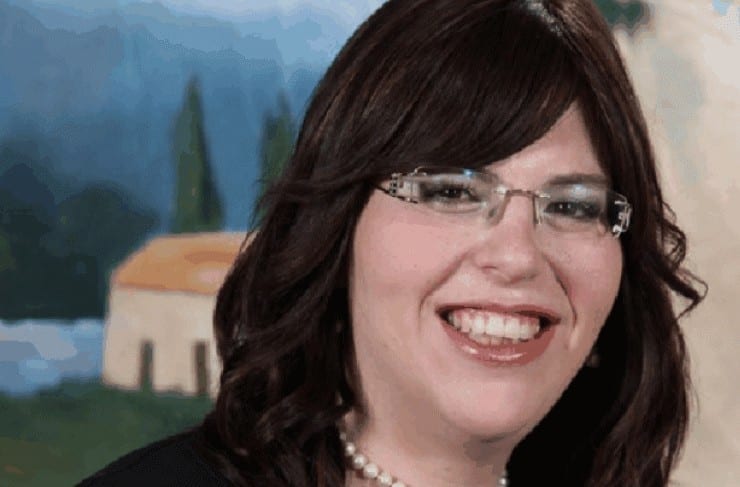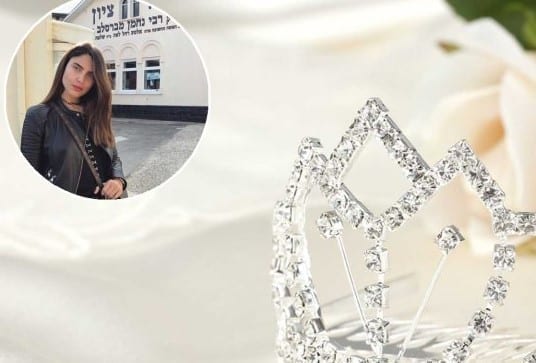In the 1980s and ’90s, archaeologist Joy Schonberg blazed a trail in the art world for Jewish antiquities, for religious Jews and for women as the founder of Christie’s Judaica Department in London and New York, and later as the president of Joy Schonberg Galleries in Manhattan. When you get to know Joy, it becomes clear that this powerhouse is also a paradox—a modern woman whose life is history. Joy grew up in a frum home in the Willesden Green neighborhood of London, which was then a very Jewish community.
Her parents, Yiddish-speaking Eastern European Jews, infused Joy with a love of art from early on. “They shlepped us to museums,” Joy remembers. “I was always surrounded by art.” After graduating from high school, Joy went to university in Israel. Her major: archaeology. “The reason I chose archaeology,” she says, “was that it sounded fascinating to me to unearth the real history of our past. I was always religious, but I wanted to see with my own eyes the biblical things I had learned.” Joy was an anomaly in Hebrew University’s archaeology department, which was populated mostly by Israeli kibbutzniks. She was one of only two frum students in the program, and her perspective often conflicted with that of her peers—and even her teachers.
“Archaeology was their religion,” she explains. “They looked and said, ‘This happened in this period, so that’s what I believe in.’ If you are religious, you’re coming from a different standpoint because your religion comes first. I never let archaeology come before religion. If there wasn’t a piece that matched the period, an archaeologist would say, ‘We haven’t found it, so it doesn’t exist.’ I would say, ‘There is a piece; we just haven’t found it yet.’” It was difficult to find her place, she admits, but she was fascinated by her studies.
As part of her training, she was involved in excavations all over Israel, including the Western Wall and Southern Wall digs with Professor Benyamin Mazar, the Old City of Jerusalem with Meir BenDov, and Hazor with the illustrious Yigael Yadin. Eventually, she completed her BA and MA in archaeology and the history of Jewish art. After college, Joy came on holiday to New York City, where she decided to stay. Her first job here was curating an exhibition at YU on Ze’ev Raban, one of the famous artists at the Bezalel School of Art in the 1920s. After two years, she decided it was time for a change. She sent her résumé to places like the Metropolitan Museum of Art, as well as Sotheby’s and Christie’s, two of the world’s most famous and exclusive auction houses.
She was amazed when Christie’s offered her a job establishing and directing a new department for antiquities, Judaica and fine art. She jumped at the chance. At Christie’s, Joy was excited by her fastpaced job, consigning objects for auction, evaluating them and researching their origins—all without a computer. “Everything was cutting and pasting,” she says. “In order to write the catalogue of items for auction, I had to cut and paste pictures next to my typed description.Photoshop didn’t exist. It could take hours before I figured out the final layout.” She also trained as an auctioneer, a skill that would later serve her well. But working in a world-famous auction house in the late 1980s presented Joy with a challenge; she had to stake a claim as a woman in a male-dominated workplace, and as an Orthodox Jewish woman in the super-secular art world. “Twenty years ago it wasn’t so easy,” Joy explains, “There were very few Jews working at Christie’s. I had a hard time leaving early on Shabbos.” On the plus side, she got to travel frequently all over America, London, Europe and Israel to locate pieces for auction.
During her stint at Christie’s, Joy met Rabbi Dr. Reuven Blum, zt”l, a child neuropsychologist and a famous chazzan whose rafter-shaking voice earned him a place at Temple Beth El in Boro Park, the summit of the world of chazzanut. (“If you get a position there, it’s like being in Christie’s,” Joy says). The couple married, and Joy traveled with Reuven to shuls around the globe where he was hired to sing for the Yomim Nora’im. “And what did I do?” says the always-enterprising Joy. “I shlepped my Judaica with me [to sell]!” W hen Joy was expecting their first child, she decided it was time to step down from her post at Christie’s; the extensive travel, she felt, was not conducive to raising a family.
She opened her own gallery in Manhattan right near her apartment and began running charity auctions for organizations like Chai Lifeline, Hadassah, and Emunah. It was, for her, the ideal way to balance motherhood with her passion for her work. “Everything was by appointment,” Joy says. “If there was no appointment, I could be with the children and go to the park… Everything was juggling, [because] you want that outlet in life, I think, but you don’t want someone else with your children all the time.” As her children grew, Joy expanded her repertoire beyond the gallery and auctions to appraisals and lecturing.
She often gives talks on history and Jewish art, how to build a Judaica collection, fakes and forgeries, and appraising. She has been invited as a guest lecturer to many hotels for Sukkot and Pesach, and has also served as a visiting professor at YU. Twenty-five years after she branched out on her own, Joy is still in demand in the Jewish art world. If you ask Joy, an expert in Jewish art and history, which historical period of art is her favorite, her answer will surprise you. “Because my life is so filled with antiquities, I prefer to surround myself with ultramodern art. My house is all high ceilings and lots of glass.” Then again, that modern sensibility falls right in line with Joy’s philosophy of living as a Jew in the modern world: “First you need a solid frum foundation of Torah learning, and then you can build on it.”





